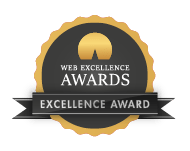Popular Tags
Ask Dr. Potato
With 939 posts, chances are there's already an answer to your question. Please try searching below before submitting a question to Dr. Potato. Use multiple words to help narrow down the results. For example, search for "potatoes" and "group" if looking for an answer on cooking potatoes for large groups.
Why Are Potato Skins Not As Thick As They Once Were?
In the 50s & 60s, our baked potatoes had a thick skin. For a person that 'eats the skins', they were fantastic. Starting in the 70s, and definitely in the 80s, thick skins were no where to be found.
I'm guessing the restaurant trade bought them, leaving us with only thin-skinned potatoes. Do you know why potato skins are not as thick as they once were?
Potato skins’ thickness may vary, depending on a number of factors: The potato type (russet, red, yellow type, etc.) the numerous varieties within each type, the time of year (‘new’ potatoes freshly harvested have a thinner skin than those in long term storage, for example), the specific source; region or even field soil composition (clay, sand, loamy, etc.) – Can affect a potato’s skin color, texture, flavor, and even thickness. None of these factors have changed appreciably over the years, or even decades, but it is understandable how one could perceive it to be so.
Share This

Dr. Potato isn't a real doctor but a team of potato experts ready to answer all your potato questions.
Click here to submit »
Dr. Potato Categories
The Idaho Potato Commission
Established in 1937, the Idaho Potato Commission (IPC) is a state agency that is responsible for promoting and protecting the famous "Grown in Idaho®" seal, a federally registered trademark that assures consumers they are purchasing genuine, top-quality Idaho® potatoes. Idaho's ideal growing conditions, including rich, volcanic soil, climate and irrigation differentiate Idaho® potatoes from potatoes grown in other states.
Contact
661 South Rivershore Lane
Suite 230
EAGLE, ID 83616
Phone: 208-334-2350
Fax: 208-334-2274
More

